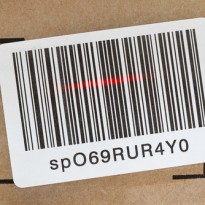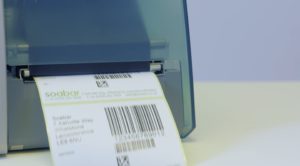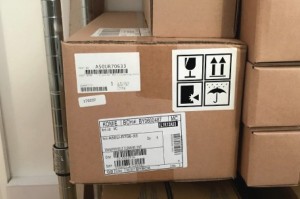Barcode Labels: Transforming Business Operations
Posted on 21/06/2018 in Product Information, by Jon

Barcode Labels: Transforming Business Operations
The Historical Journey of Barcodes
Before the introduction of barcode technology, inventory management was a time-consuming, error-prone process. First developed in the early 1950s, barcodes have transformed from a simple concept to a global standard in information management.
How Barcodes Actually Work: A Technical Breakdown
At its core, a barcode is a sophisticated translation system. Each black and white line represents a unique combination of data, much like a complex linguistic code. When a scanner passes over the barcode, it reads the width and spacing of these lines, converting them into digital information instantaneously.
Types of Barcode Technologies
- 1D Barcodes: Traditional linear barcodes
- 2D Barcodes: More complex, including QR codes
- Data Matrix Codes: Used in specialized industrial applications
- QR Codes: Smartphone-friendly, multi-directional scanning
Strategic Applications of Barcode Labels
1. Precision Product Management
Barcodes are far more than simple tracking tools—they’re strategic assets for business intelligence. By providing real-time, accurate data, they enable:
Inventory Optimization
- Instant stock level tracking
- Automated reordering systems
- Reduced human error
- Detailed consumption patterns analysis
Case Study: Healthcare Implementation
In medical environments, barcode precision can be life-saving:
- Patient wristbands with complete medical histories
- Medication tracking to prevent administration errors
- Laboratory specimen management
- Surgical equipment sterilization tracking
2. Innovative Marketing Strategies
Modern consumers expect interactive, technology-driven experiences. Barcodes offer unique marketing opportunities:
Digital Engagement Techniques
- Instant product information access
- Personalized discount generation
- Direct links to promotional content
- Seamless integration with mobile applications
Example Scenarios
- Restaurant menus with nutritional information
- Product packaging linking to sustainability credentials
- Event tickets with additional digital content
- Fashion labels connecting to styling recommendations
3. Enhanced Brand Presentation
Barcodes enable a minimalist, sophisticated product design approach:
Design Philosophy
- Reduced label complexity
- More aesthetic packaging
- Focus on visual brand elements
- Increased consumer trust through transparency
Practical Implementation
- Nutrition labels simplified through digital links
- Multilingual product information without cluttered packaging
- Dynamic content updating without physical label changes
Barcode Printing: How to Print
Printing Technologies for Barcode Labels
Printing barcodes is both an art and a science, requiring precision, specialized equipment, and strategic understanding. Different printing technologies offer unique advantages depending on your specific business needs.
Thermal Printing Technologies
There are two primary thermal printing methods:
1. Direct Thermal Printing
- Uses heat-sensitive paper that darkens when heated
- Ideal For:
- Short-term labels
- Shipping labels
- Receipts
- Advantages:
- No ink or toner required
- Low maintenance
- Rapid printing
- Limitations:
- Labels fade over time
- Sensitive to heat and UV exposure
2. Thermal Transfer Printing
- Uses a heated ribbon to transfer ink onto labels
- Ideal For:
- Durable, long-lasting labels
- Industrial environments
- Product packaging
- Advantages:
- Resistant to environmental conditions
- High-quality, crisp barcode images
- Works on various material types
- Recommended for: Manufacturing, logistics, healthcare
Inkjet and Laser Printing Methods
- Suitable for lower volume, office-based applications
- Flexibility in label design and color
- Less consistent for high-precision barcode requirements
Technological Trends and Future Outlook
Emerging Barcode Technologies
- Augmented Reality Integration
- Blockchain-Verified Product Tracking
- AI-Enhanced Scanning Algorithms
- Internet of Things (IoT) Connectivity
Global Market Impact
- Estimated global barcode market value: $13.6 billion by 2027
- Projected annual growth rate: 7.5%
- Increasing adoption across diverse industries
Practical Considerations for Implementation
Choosing the Right Barcode System
- Assess your specific business needs
- Consider scanning environment
- Evaluate data complexity requirements
- Plan for future scalability
Common Implementation Challenges
- Initial technology investment
- Staff training
- Legacy system integration
- Continuous technological evolution
Ethical and Privacy Considerations
While barcodes offer tremendous benefits, businesses must consider:
- Data protection regulations
- Consumer privacy
- Transparent information sharing
- Consent-based tracking mechanisms
Conclusion: Barcodes as Strategic Business Tools
Barcodes represent more than a technological solution—they’re a strategic approach to business efficiency, marketing, and customer engagement.
Is you business utilising barcode technology in the workplace?
Call us today to find out how barcode printing could give your business a competitive advantage, and speak to one of our team about printing barcode labels.




